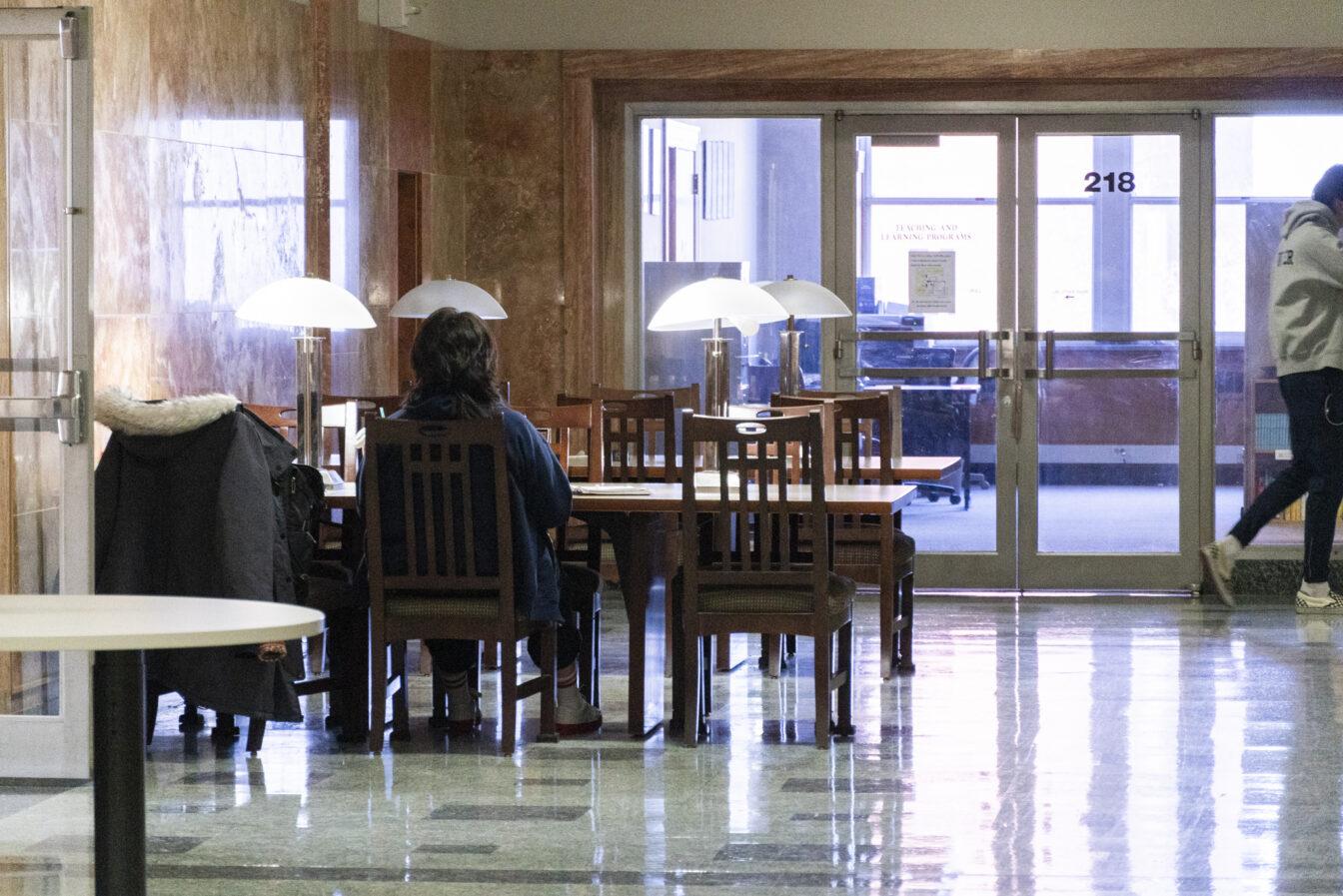A university in the United Kingdom placed over 200 trigger warnings on William Shakespeare readings after students with past trauma and sensory issues requested the warnings, according to Fox News.
Death, violence, knives and family trauma were flagged in Shakespeare’s “Macbeth,” and warnings for “popping of balloons” were added to a theater performance of “The Tempest,” according to Fox News.
At the University of Wisconsin, some professors have also placed trigger warnings in their syllabi following students’ requests to do so.
Halverson-Bascom and Douglas Kelly professor of French Jan Miernowski said he began placing trigger warnings in his course syllabi for two reasons.
For one, Miernowski observed his students placing content warnings in their assigned essays when there is explicit content present. The second reason is that his students reached out saying they were extremely affected by the content of his course books.
“I put stuff on my syllabus for different reasons, because it is artistically interesting, is representative of some part of French culture or history or literature, and, because it is valuable from the intellectual point of view,” Miernowski said. “Not because I want to provoke people in one way or another, ideologically or emotionally — certainly not — but because of the intellectual value of things.”
Miernowski said that while his class was reading the 2008 French novel “Pierre de Patience” by Atiq Rahimi, one of his students told him they failed to complete work because they could not sleep after receiving trauma from reading the novel.
Following the interaction with this student, Miernowski said he began placing trigger warnings in his syllabi which is presented at the beginning of the semester.
Professors can place trigger warnings in syllabi so that students who choose to thoroughly read through it at the start of the semester can be mentally prepared, according to Miernowski.
But trigger warnings tend to not have a large impact on students’ feelings or their educational outcomes, assistant teaching professor and Director of the Psychology Digital Immersion Programs at Arizona State University Sarah Gavac said.
Recent data analysis has found that trigger warnings may increase the anticipatory effect, according to Gavac.
The anticipatory effect refers to the impact that our expectations or anticipation of a future event can have on our current behavior and emotions, according to Newristics.
Trigger warnings are used in regards to people experiencing specific traumas and unexpectedly encountering a reference to that experience, which then brings their own experiences to mind leading to a physiological reaction, according to Gavac.
Trigger warnings can cause distress, an increased heart rate and can make students avoid the material which can then in turn be detrimental to one’s learning, Gavac said.
The word “triggered” has been misused in recent years, predominantly in 2020, Gavac said.
“Oftentimes we see movement from more clinical psychology focused phrases into the mainstream,” Gavac said. “Oftentimes what they’re [people who say triggered] meaning is that they’ve been activated, or ‘this is distressing to me, or I’m uncomfortable.’ They’re misusing the word because perhaps they haven’t actually been traumatized, but it might still be making them uncomfortable.”
Trigger warnings are also often too general and do not fully recognize and name all traumatic experiences, according to Gavac.
There are two ways in which trigger warnings could theoretically be helpful — the first one being that warnings can help prepare students for certain content, according to Flinders University lecturer Victoria Bridgland.
“… To be forewarned is to be forearmed,” Bridgland said. “So basically if you warn someone about something and then they see it, they should be in a better off position than when they weren’t warned — emotionally.”
The second category is avoidance — meaning if a student sees a trigger warning it could help them avoid some sensitive topic, according to Bridgland. But, there is not much concrete evidence on the avoidance use case, Bridgland said.
Trigger warnings are not deemed effective in helping students avoid particular content, according to Bridgland’s research.
“We have tried to look at some of these people that we would consider ‘the avoiders’ and … actually some may experience a sort of attraction to the trigger warning,” Bridgland said. “And then there’s also obviously a need to consider the idea that avoidance as a whole isn’t a very good coping strategy.”
Trigger warnings are undeniably ineffective and have not been found to support students in a good way, according to Bridgland.
Trigger warnings have been found to not really prepare anyone, as they do not teach one how to change their emotions when confronted with a post-traumatic experience, Bridgland said.
In Bridgland’s experience as a lecturer she found that students tend to cope well with sensitive content in her lecture slides.
Trigger warnings can also prevent people from participating in the intellectual dialogue which is fundamental for, not only a university, but also for the global community, according to Miernowski.
In classrooms, teacher-student discussions on pieces of literature help students gain different perspectives and reflections on certain life situations like death or violence, Miernowski said.
Miernowski said he is, above all, in agreement with placing trigger warnings, as he does not want a student to unexpectedly be hurt emotionally.
In teaching and academia, both the teachers and students can decide to face suffering to obtain a better comprehension of the suffering itself, Miernowski said.
This is not to say that people should suffer, but it would be considered lying to people saying that it is easy to diminish or prevent suffering altogether, Miernowski said.
“It’s not much of a question of should we tolerate human suffering, but rather, should we acknowledge the fact that human life, human condition, individual and collective, is marked by suffering, psychological, physical violence, hatred and so forth,” Miernowski said. “To what extent do we have the courage to face human suffering?”



